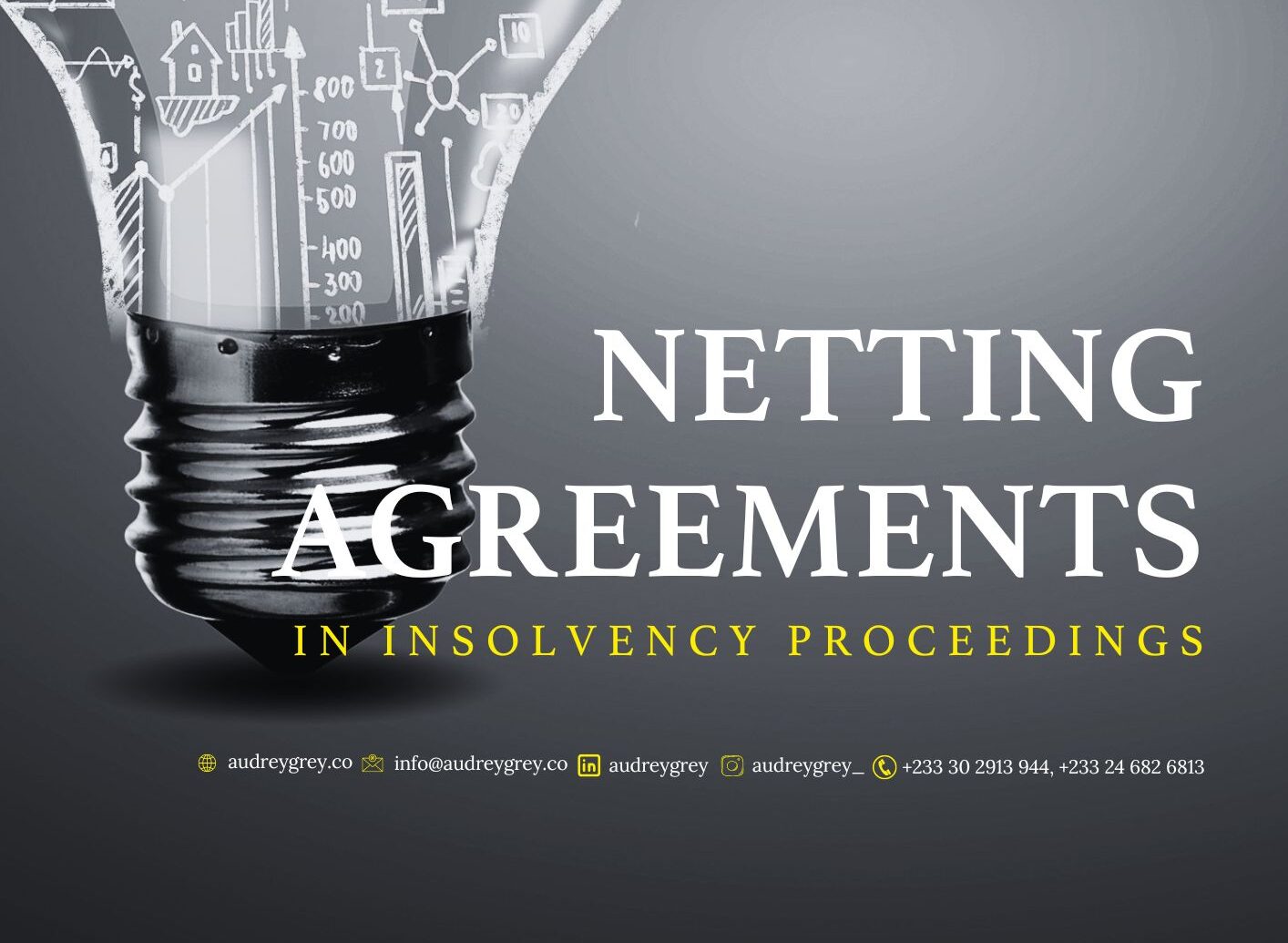“Netting arrangements in insolvency allow parties to a qualified financial contract to consolidate their claims and cross out their mutual obligations.”
One of the aims of the Ghanaian insolvency regime is to maximise the returns of the entire creditor class as opposed to benefiting specific creditors. To achieve this, the Act deploys a number of tools. These include the imposition of a moratorium on the commencement, and continuation of court proceedings – including enforcement measures against the insolvent company. The aim is to prevent run-ins, enable the insolvency practitioner swell-up available assets and distribute them to the creditor pool. Further, the insolvency law prohibits actions or arrangements that benefit one creditor over other creditors. Whiles the Corporate Insolvency and Restructuring Act, 2020 is generally consistent with this objective, an exception is created in the case of netting agreements. This Q&A looks into the rules governing netting agreements and how they impact the insolvency process.
1. What is a netting arrangement?
A netting agreement permits two parties to a qualified financial contract to, on the occurrence of an insolvency, to consolidate the respective claims they have against one another, and then cross out these mutual obligations with one another in one fell swoop. These obligations may be present or future (a) payment obligations, (b) delivery obligations, or (c) entitlements. It also includes a collateral agreement entered under a qualified financial agreement before 30th April 2020.
2. Are the provisions on netting applicable to all types of contracts?
No. The netting provisions under the Corporate Insolvency and Restructuring Act are only applicable to “qualified financial contracts”. Examples of these qualified financial contracts include (a) a currency, cross-currency or interest rate swap; (b) a basis swap; (c) a spot, future, forward or other foreign exchange transaction; (d) a commodity swap; (e) a forward rate agreement; (f) a currency or interest rate future; (g) a currency or interest rate option; (h) an equity derivative, such as an equity or equity index swap, equity forward, equity option or equity index option; (i) a derivative relating to bonds or other debt securities or to a bond or debt security index such as a total return swap, forward option or index option; (j) a credit derivative such as a credit default swap, credit default basket swap, total return swap or credit default option; (k) an inflation or any other economic statistics derivative; (l) a spot, future, forward or any other securities or commodities transaction; (m) a securities contract including a margin loan and an agreement to buy, sell, borrow or lend securities; (n) a commodities contract including an agreement to buy, sell, borrow or lend commodities; (o) a collateral arrangement.
3. What is the rationale behind the recognition of netting agreements under the Corporate Insolvency and Restructuring Act, 2020?
Netting agreements permits parties, typically entities in the financial industry, to to allocate risks amongst themselves. In the case of the Corporate Insolvency and Restructuring Act, 2020, the specific risk being contemplated is the risk of insolvency. Financial institutions, including Banks and Specialised Deposit-Taking Institutions, have significant exposure towards each other. In the absence of the netting provision, the insolvency of one entity risks impacting other financial entities negatively.
Ordinarily, if A owes B GHS 150. And B owes A GHS 100 , A would be entitled to pay B GHS 150. B would also be entitled to pay A GHS 100. Should A become insolvent, B’s GHS 150 will be treated in accordance with the insolvency ranking provisions. This is means that there is even the risk that B will not get the entire GHS 150 owed it by A. The same situation applies in the context of B’s indebtedness to A.
Under a netting arrangement, A and B simply “net-off” or deduct their mutual obligations to each other. This means that B’s exposure to A would be GHS 50 instead of GHS 150.
4. To what extent is a netting agreement enforceable in the event of an insolvency?
The Corporate Insolvency and Restructuring Act’s provisions on netting recognises the contractual intent of the parties and disables the application of the standard insolvency rules – especially the pari passu rule which requires that all creditors are
treated equally. This means that an insolvency practitioner cannot insist on having the subject matter of the netting agreement ( as contained in a qualified financial contract) being part of the asset pool. This further means that a moratorium arising as a result of a liquidation does not affect the parties’ right to net-off their mutual obligations.
In essence, netting agreements do not count as creditor claims and also do not affect the ranking of claims or distribution of dividends to creditors during insolvency.
5. Aside from the Insolvency legislation, what other legislation provide for netting arrangements?
The Corporate Insolvency and Restructuring Act, 2020 (Act 1015) recognises that other specialised legislation may provide for their own insolvency arrangement. For instance, the Banks and Specialised Deposit Taking Institutions Act, 2016 (Act 930) recognises the netting of obligations between Banks and Specialised Deposit Taking Institutions and their counterparties
You can also read this article on LinkedIn or on the BnFT website




